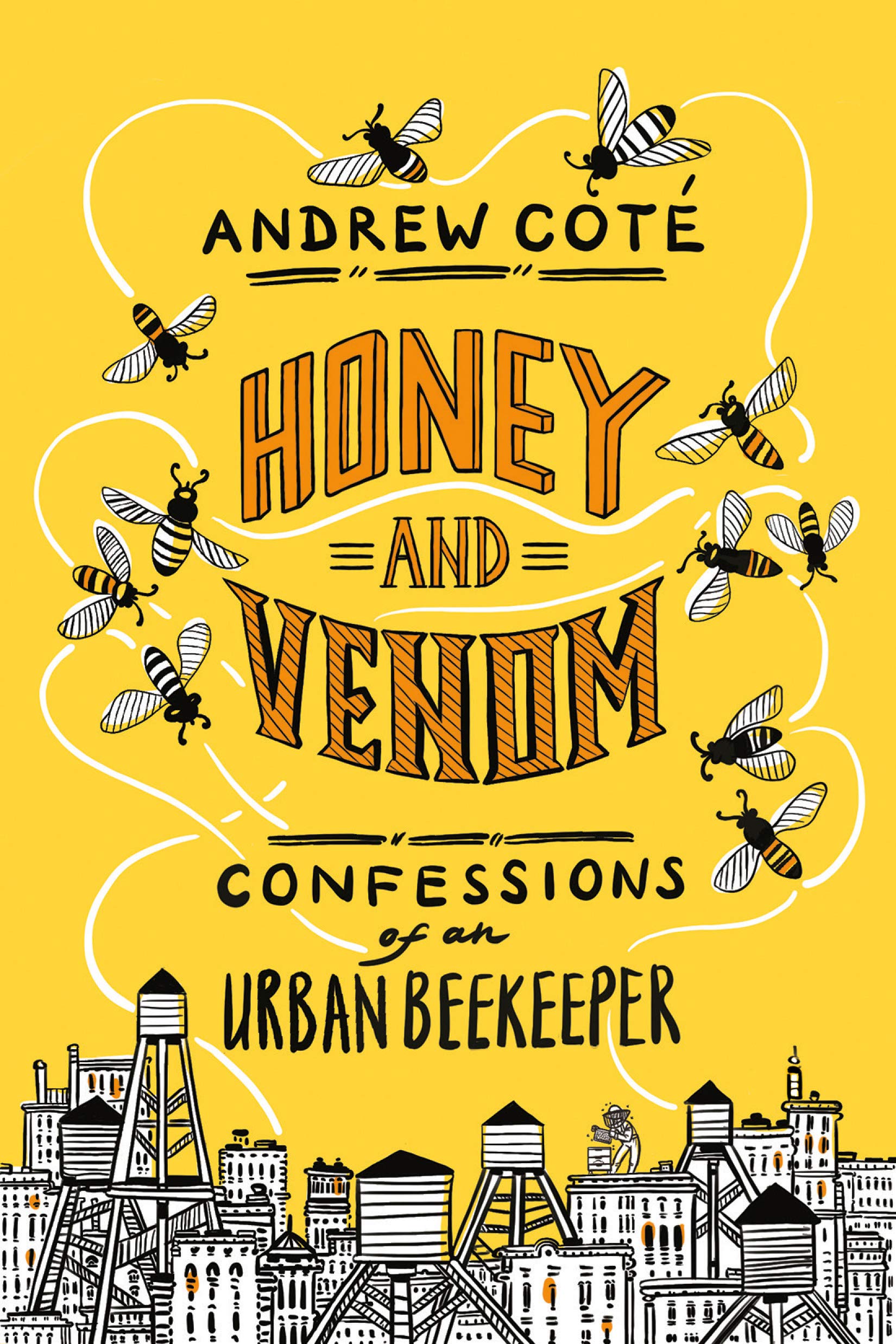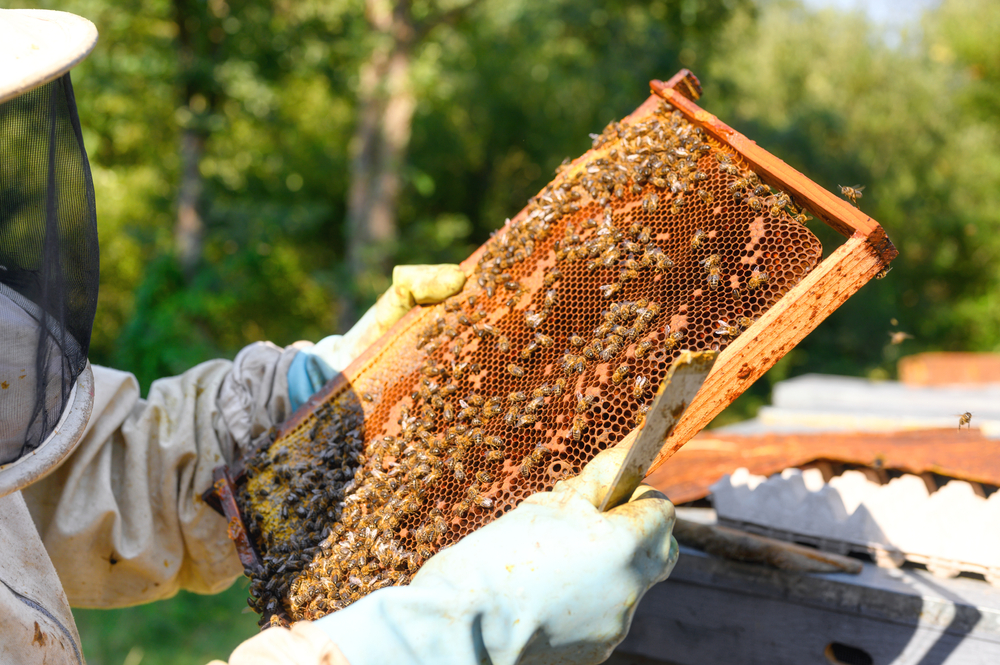I bleed honey. It runs deep in my veins. I am a fourth-generation beekeeper, intimately familiar with the world of honey bees and the aberrations of those who maintain them.
Early on, I honed my craft as a beekeeper on the array of hives that surrounded my boyhood home in Fairfield County, Connecticut. But today, aside from my apiaries in the suburbs and countryside surrounding Gotham, my turf includes skyscrapers, community gardens, ancient cemeteries, international territory, and other hidden pockets of New York City. My apiaries top, or have topped, some of New York’s most iconic buildings and locales, from the Museum of Modern Art to the Waldorf Astoria. My bees buzz above the lawn of the United Nations and the cemeteries of Green-Wood in Brooklyn, Woodlawn in the Bronx, and St. Patrick’s Old Cathedral down on Little Italy’s Mulberry Street. They preside atop Industry City in Sunset Park and flitter over a ballet schoolnear the Flatiron. They hover and dart above churches and synagogues, secondary schools and restaurants. The apiary I installed and tend above the seventy-second floor of a hotel near Central Park is the highest in the world, though admittedly not the most productive. While it is certainly a thrill for me to work with these industrious, extra-high-flying honey beesat such lofty altitudes, I love working with those at ground level just as much — although I do envy the spectacular views of the city dwellers. All of these bees serve restaurants, grocery stores, my own honey stand, and, of course, first and foremost, themselves.
Beekeeping — and for beeks like me, urban beekeeping — is a passion for those who practice it. Worldwide, more and more people are drawn to this bewitching and satisfyingly messy work for environmental and conservation reasons, for the joy of producing something on their own, and because honey is, well, delicious.
One thing I love about beekeeping is how it brings people together in combinations one could not otherwise imagine. Because of it, I’ve cultivated the most unexpected acquaintances and friendships both close to home and abroad. I’ve worked with Parisian beekeeper Marie Laure Legroux on hives that have been on the grounds of the Luxembourg Gardens since 1856 (though Marie has not been there quite so long), and others with Nicolas Geant atop the Grand Palais des Champs- Élysées and Notre-Dame (the three atop Notre-Dame, it should be noted, survived the tragic fire that gutted the building in 2019). I’ve harvested from log hives in rural Samburuland in Kenya, helped prepare bees for overwintering in small Moldovan villages, relocated apiaries in immediate post-earthquake Port-au-Prince, Haiti, and helped Fijian beekeepers increase their profitability through targeted marketing of honey to honeymooners. Friendships were often forged along with those endeavors, many of which continue to this day.
Thoreau says that keeping bees is like directing sunbeams. Cupid supposedly dipped his arrows in honey before he set them flying. My favorite may be the words of Victor Hugo, who wrote “Life is the flower for which love is the honey.” I think the Frenchman was onto something there. I adore these magical little creatures—from my rusticating hives in the countryside to their cosmopolitan cousins atop Manhattan high-rises. I love my bees and I love how I came to be a beekeeper.
I learned beekeeping from my father, Norm, who is distinctly humble and soft-spoken. A wiry fellow who as of this writing is in the latter portion of his eighth decade, he was a navy man poised on a ship off the coast of Cuba during the Cuban missile crisis. After his days on the water dried up, he turned to fire, serving for more than three decades as a lieutenant in the Norwalk fire department. In the days following the attacks of 9/11, he was part of a dogged rescue and recovery team digging fruitlessly in the pile of rubble that was once the World Trade Center. But like many men of action, Norm’s manner is calm, patient, and distinctive. His mother, Aldea, grew up on a farm with honey bees in Quebec, where she, along with her siblings and father, managed colonies of the nectar-gathering empresses of the sky. When she moved to the United States, she left the bees and the farm behind, giving rise to a brief period of dormancy for beekeeping in our lineage until Norm picked up the baton — or the bee smoker and hive tool. Whatever else we are, both my brother, Mike, and I are also now beekeepers, as are my brother’s children; I hope mine will be as well. Through our charity, Bees Without Borders, my father and I have traveled the world as a team carrying on the family tradition, teaching, listening, and working with bees while navigating our own modest bee business at home. And beekeeping for the beekeeper is a lot like it is for the honey bees themselves, or at least can be. Overlapping generations working together. Cooperative brood care. Division of labor. Mutual love of honey. We all have a lot in common.



